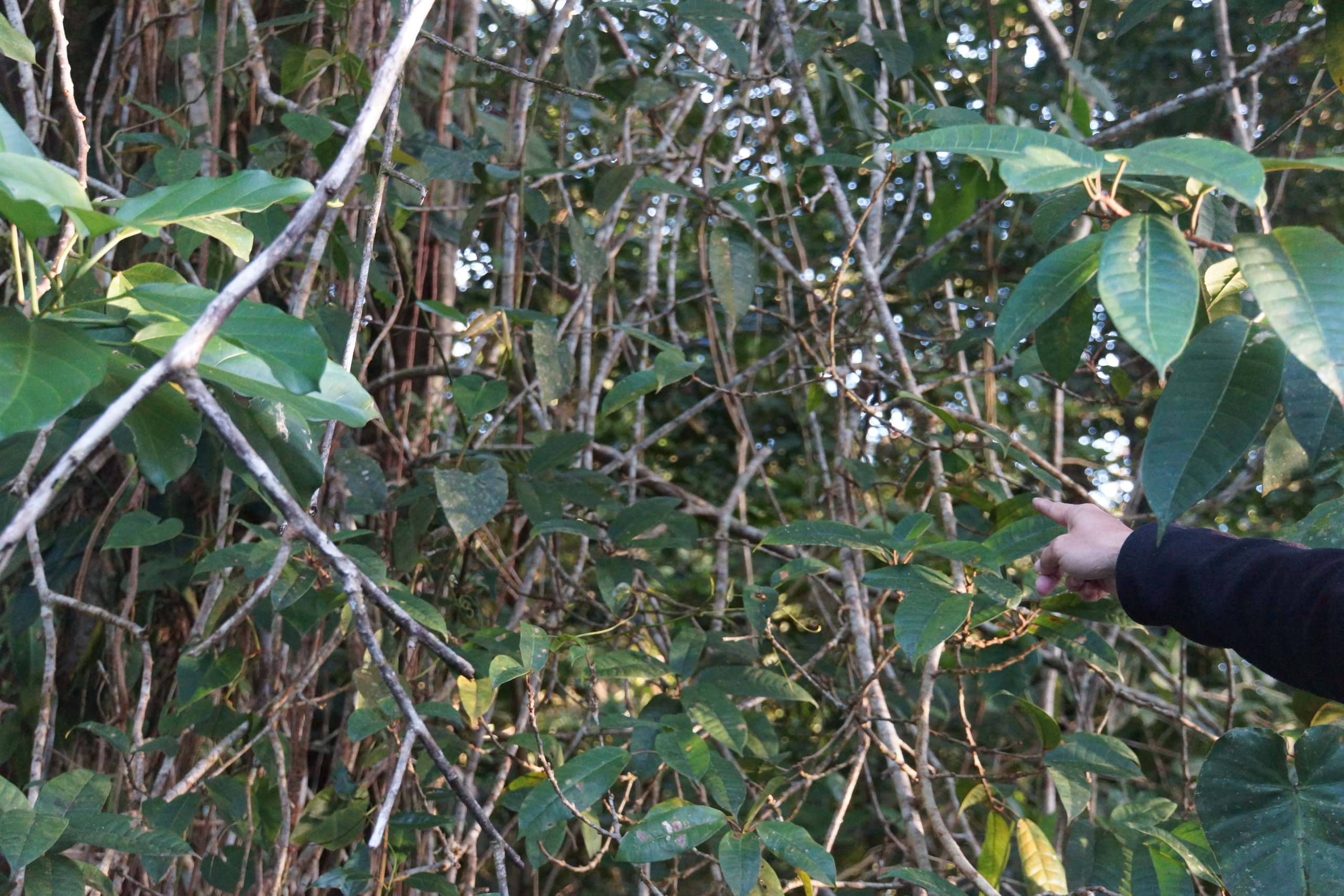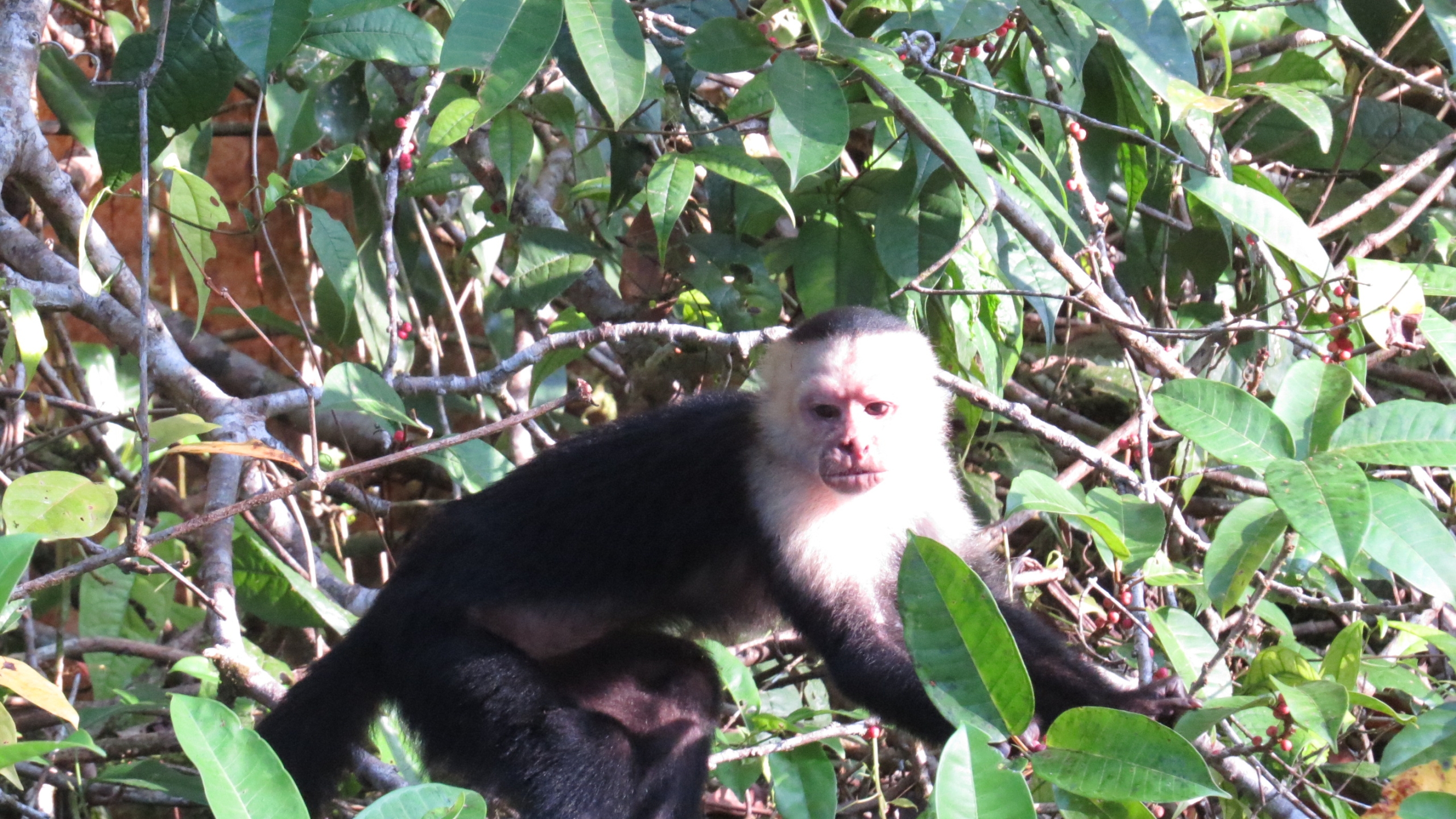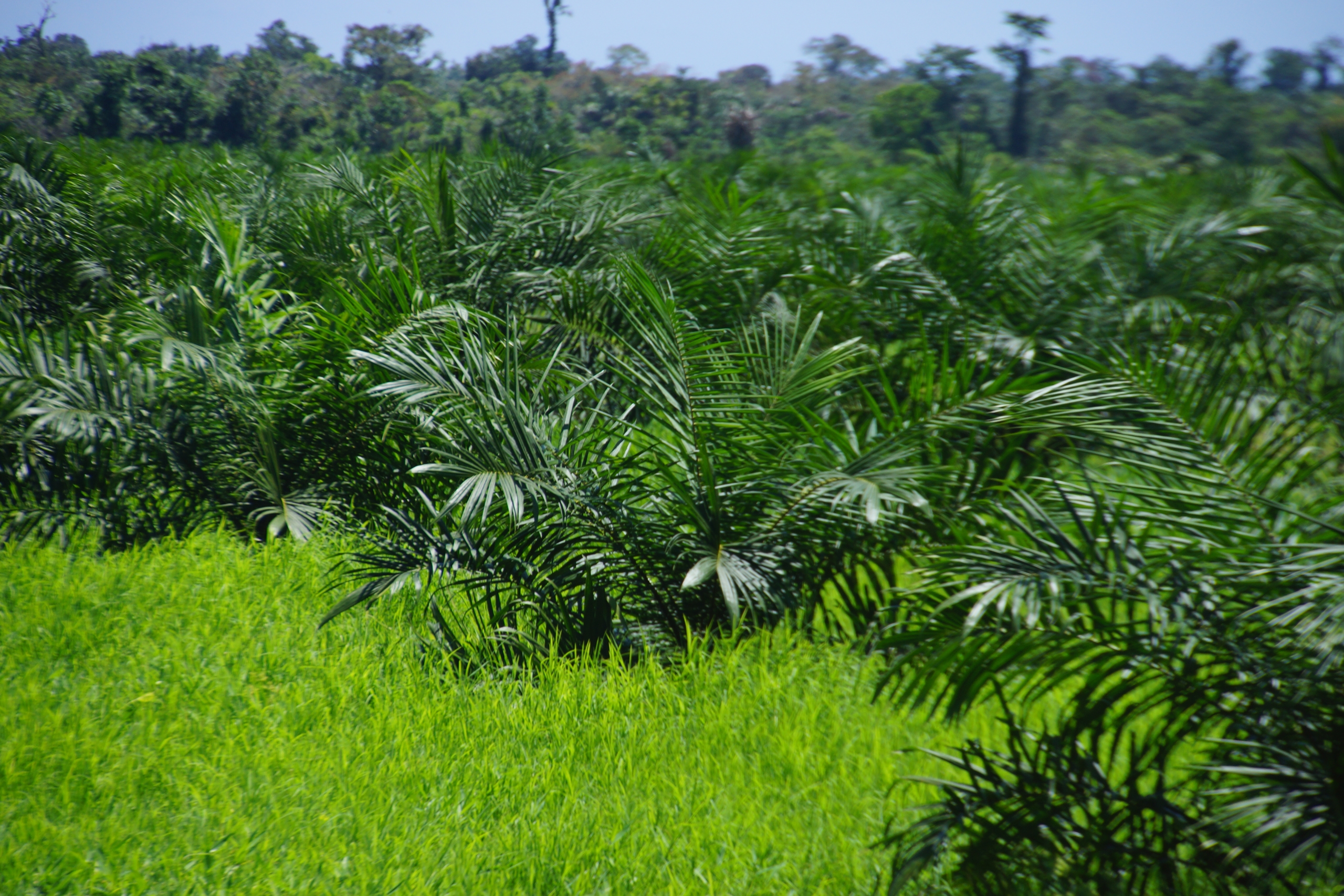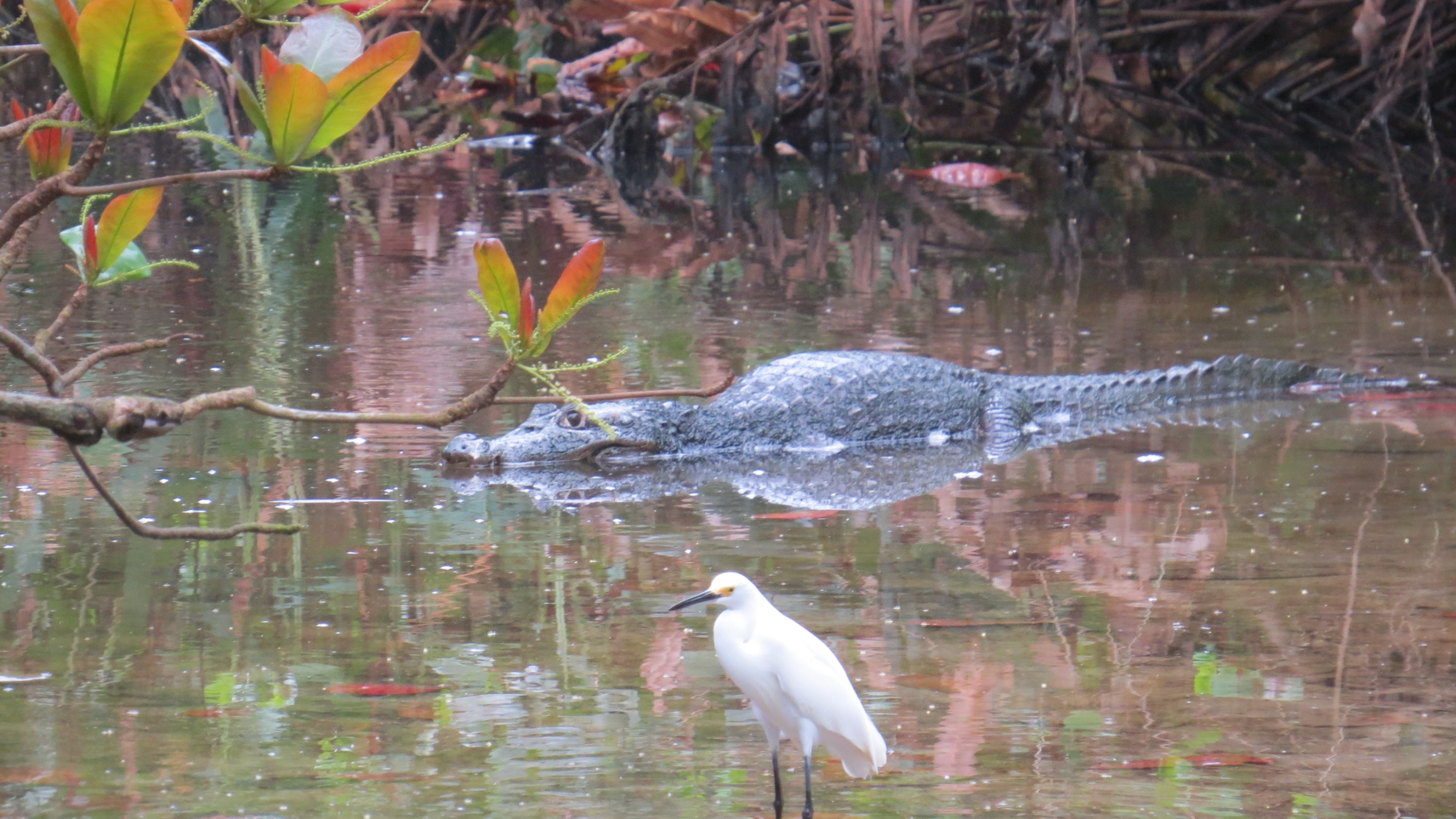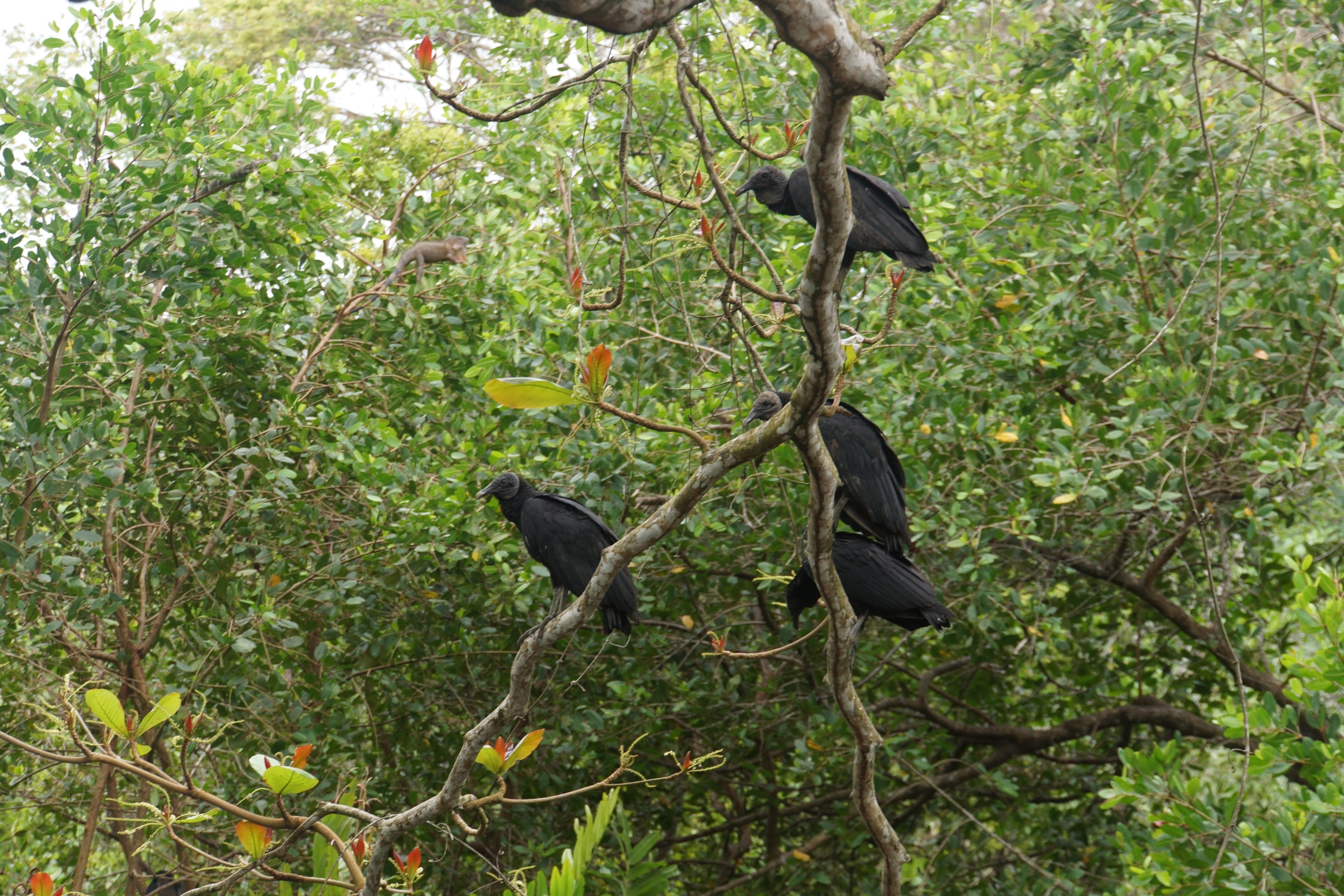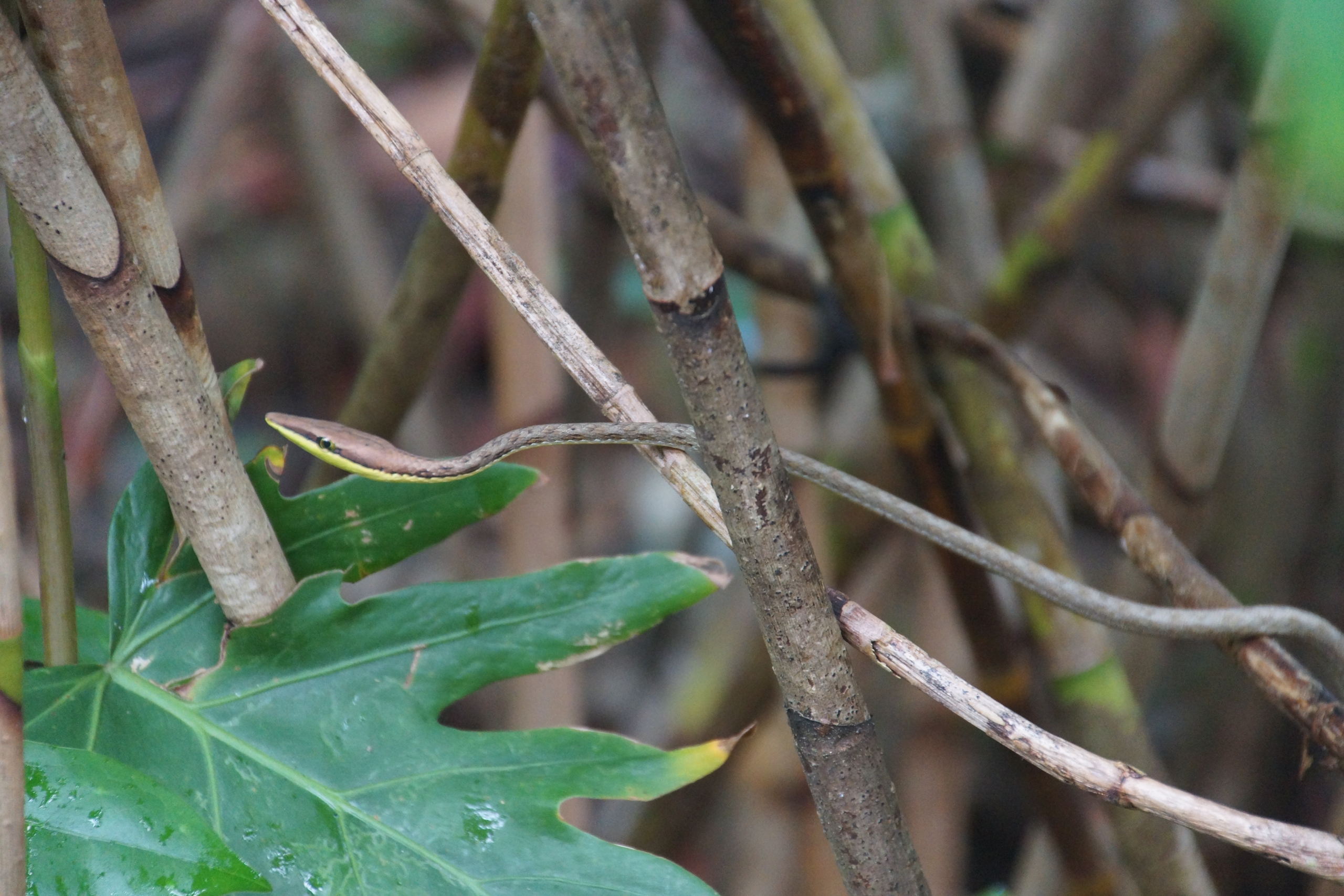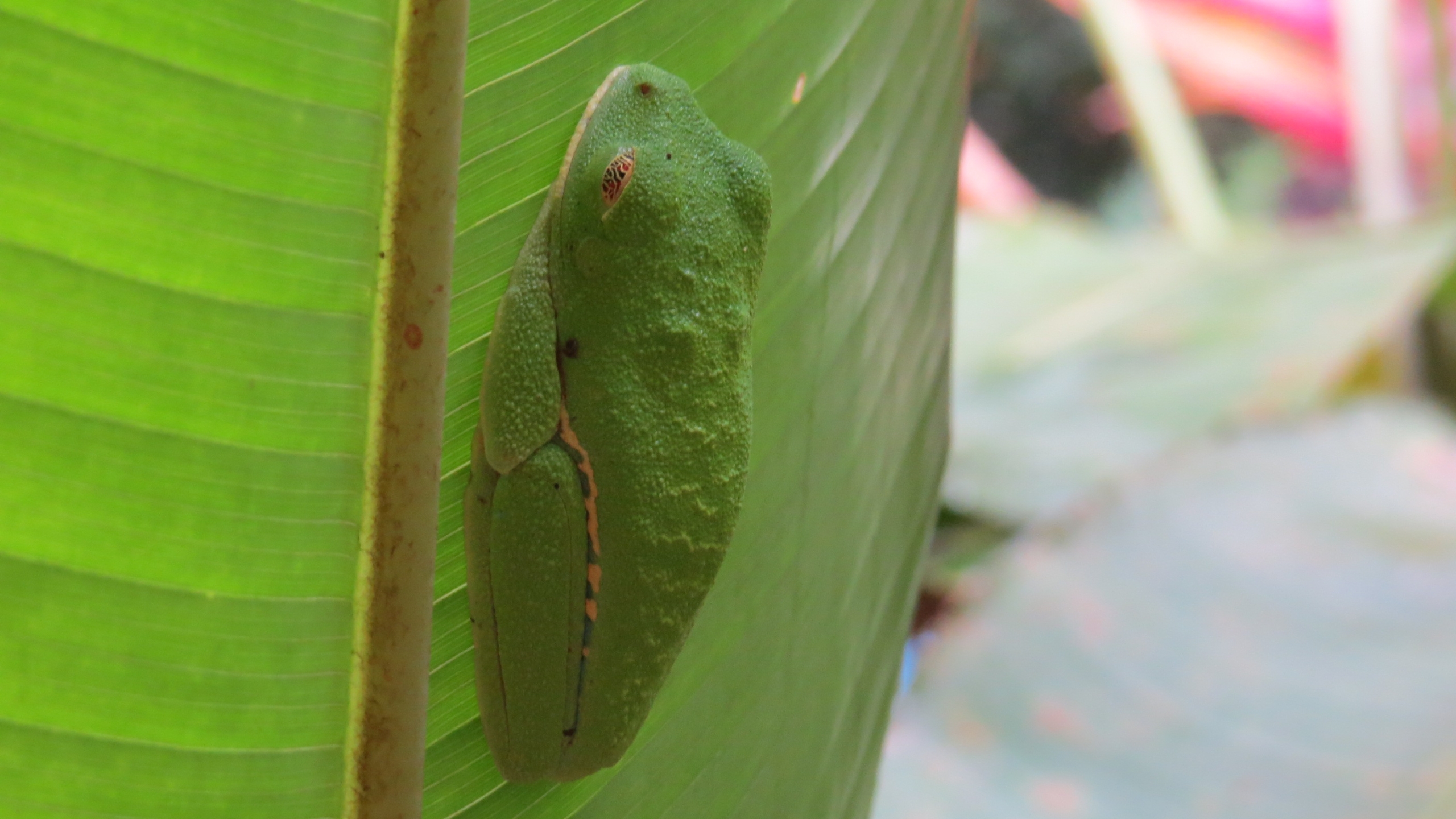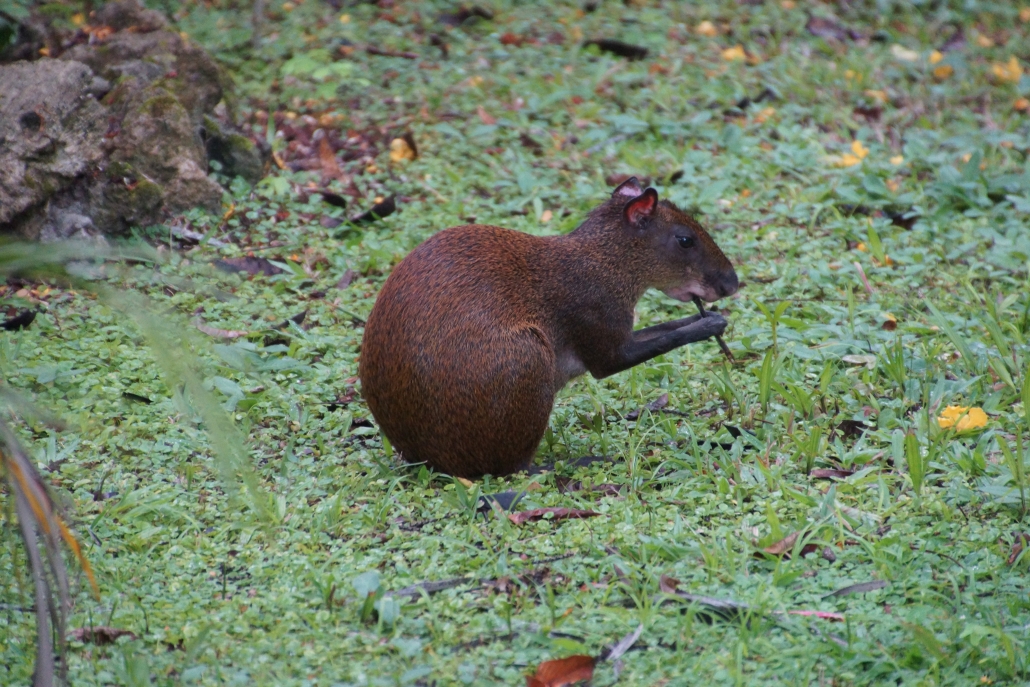For the last piece of the trip we took a motor boat and after a ca two hours trip on artificial and natural channels we arrived in Tortuguero. Tortuguero means ‘turtle village’. The beaches around the village are nesting places for the turtles. Instead of harvesting the turtles, people exploit them and the surrounding park in nondestructive yet economically satisfactory ways. The community takes pride in ‘its’ turtles and national park. Night visits are allowed in the time frame July to Mid-October. Pachira Lodge, the hotel we stayed, has several wooden houses and is spread in the tropical forest. The howler monkey, the former boss in that area, begun at 5:00 am howling and waked up all the guests!
After an overnight stay in Pachira Lodge, Tortugero we started next morning at 6 am a wonderful boat trip within the National Park which offers great wildlife and birding opportunities. The park is home to about half the bird and reptile species found in Costa Rica. We saw white-face capuchin and howler monkeys, alligators and a series of birds. Gorgeous landscape with the sun reflecting in the water and virtually no noise at all. Unfortunately we were not the only tourists looking for wildlife!
On the way to Cahuita we saw an oil plam plantation. In the last years numerous oil palm plantations have been installed in Costa Rica. After an amazing motor boat tour through the Tortuguero Park channels we left toward Cahuita.
Our next stop was the Cahuita National Park on the Atlantic shore. It is located on the Caribbean Coast and is quite small compared with othe National Parks in Costa Rica. However it is one of the most frequently visited national parks in Costa Rica. The reasons are simple: easy access and nearby hotels combined with attractive beaches a coral reef and coastal rainforrest with many tropical species.
Our hotel Atlantic Lodge Cahuita was a sort of primitive but the garden was wonderful with lot of exotic plants like Heliconia, and Ethiopian Banana (Germ: Zierbanane) and animals.



















